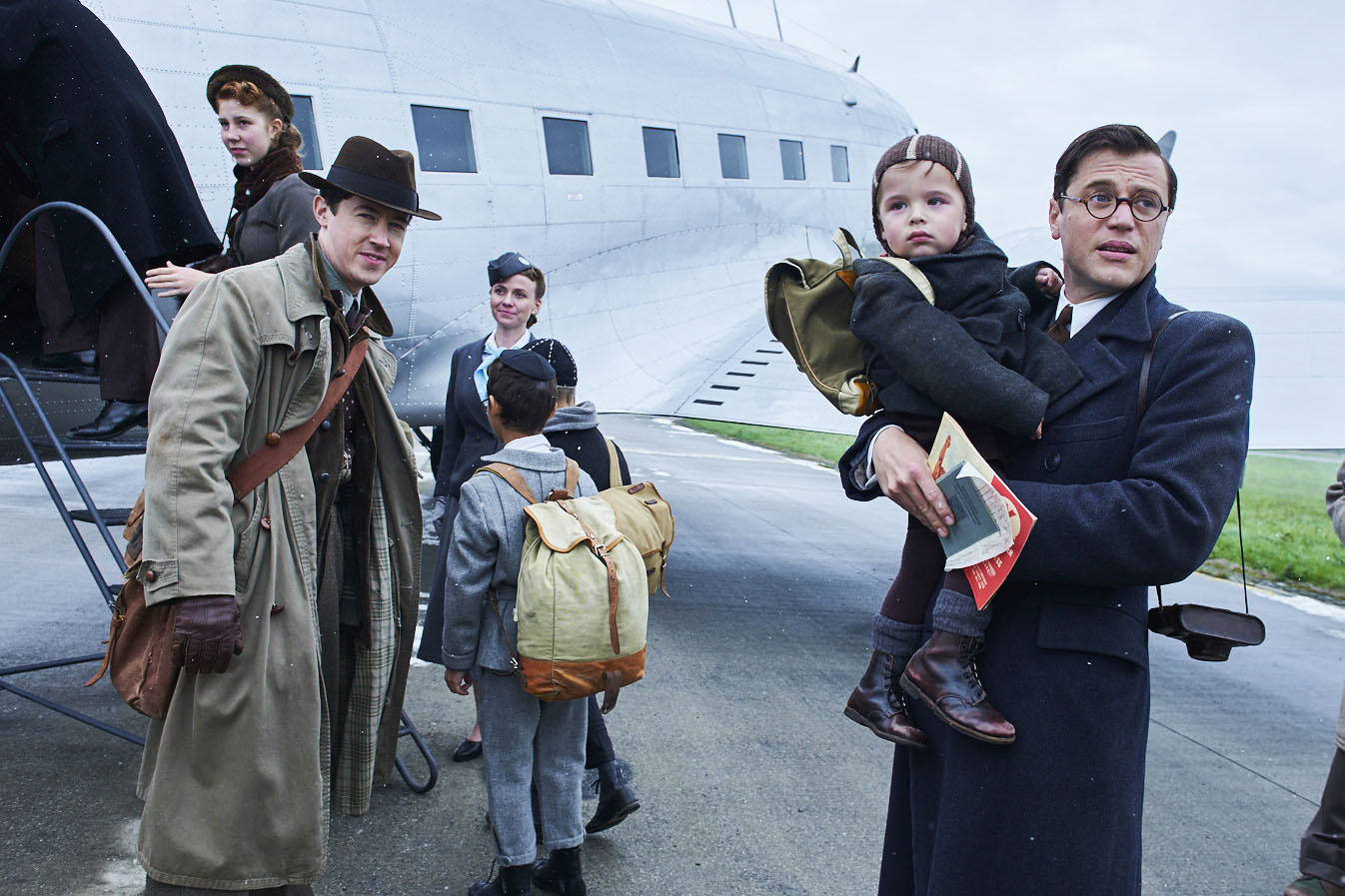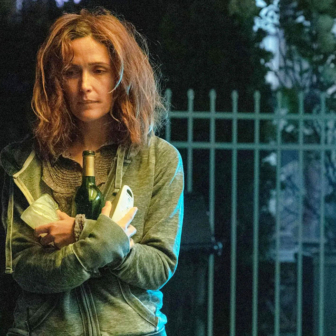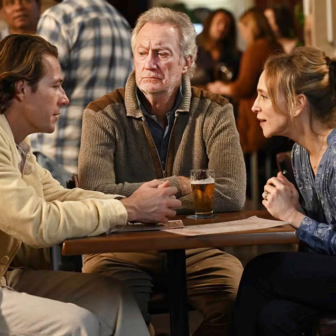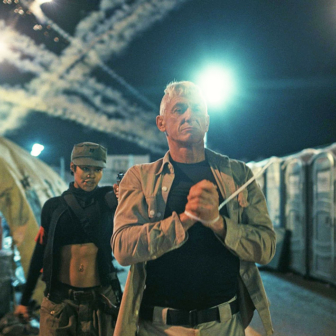The idea of “goodness” is probably not among the most popular narrative sources in commercial cinema, but that is in fact — and I mean “fact” — the essence of director James Hawes’s first feature film. That is to say, One Life is based on the achievements of a real-life figure who derived his sense of worth from doing work of a goodness that he rightly saw as crucial.
The protagonist of this narrative is Sir Nicholas (“Nicky”) Winton, a London stockbroker of German-Jewish background who became appalled at the plight of refugees who had fled Germany to Czechoslovakia during the years leading up to the second world war and became committed to their rescue. The film, with its moving articulation of Winton’s life, moves back and forth over fifty years, between the exploits of his younger self, played by Johnny Flynn, in 1938, and his older self, played by Anthony Hopkins, who in 1987 is feeling he ought to have achieved more, that his earlier efforts should have borne more fruit. One of the film’s triumphs is how these two versions of the same man interact so convincingly over the decades.
The film opens with black-and-white images of refugees and a title announcing Hitler’s takeover of Austria and Sudetenland in 1938. It then cuts to the old Winton pottering round in his very messy study — a study full of documents presumably connected with the late 1930s — in Manchester in 1987 and his younger wife Grete (Lena Olin) is wondering what this mess is all about. The next image depicts the old man diving into a pool, the crash cutting to a sequence of wartime mayhem and refugees. By this time both periods of the film have been established, as well as Winton’s happy marriage in old age.
Back to London in 1938 the young Winton, in a reversal of time, echoes his older self by calling out “Home” as he returns, such detail reminding us that we are watching two men who are both, at different times of their lives, preoccupied by the need to put “one life” to good use.
“I have to do something,” says the younger one. This need leads him to Prague, where he is appalled by the plight of refugee children, most often Jewish, and recognises the need to organise their rescue. He makes contact with his forceful mother (Helena Bonham-Carter, in what may be a career-peak performance), who is also trying to push for wider concern, and financial support, for refugee children.
This is a film of telling images rather than a conventional series of cause-and-effect related events and it may sometimes seem a little straggling as it pursues the anguish of the children in refugee camps and their separation from their families. American reviewer Brian Tallerico’s somewhat negative response — “What One Life is about is powerful, but this is not a powerfully made film” — seems scarcely justified, even if the film doesn’t conform to the structural elements of “classic Hollywood cinema.” There is no denying the passionate and poignant feeling that underlies such moments as those revealing children on the kindertransport that is intended to carry them away from the dangers of Prague.
Also at issue is the crucial importance of raising the money in England to arrange for further such rescues. It is never just a matter of Winton’s becoming a hero; others are similarly motivated, including the tough-minded Doreen (Romola Garai), with whom Winton makes contact when he goes to Prague, his similarly formidable mother, who stresses the desperate need to raise financial support for further rescues, and his strongly motivated friend Martin (Ziggy Heath as the young man, Jonathan Price as the friend of Winton’s later life).
Hawes stresses scenes of children waving farewell to their anguished parents as they are being sent off to foster homes rather than lavishing attention on the heroic status of the young Winton. Indeed, as suggested above, the older Winton, fossicking around letters and papers of fifty years earlier, is almost self-reproachful that he did not achieve enough.
Like some of the most memorable recent films, including Past Lives, One Life relies more on such images and the emotional responses they set in motion for the viewers’ attention than on the more usual plotting of commercial cinema. Though relationships emerge, such as those between young Winton and his mother, or between young Winton and Doreen or Martin, or in the married life of the older Winton and Grete, these moments are not allowed to dominate the narrative: more important is how they work their way through the larger and often dreadful war-generated events.
When the older Winton meets up again with Martin, he asks reflectively, “Do you ever think about the children and what became of them?” This concern is what focuses our response to the ageing Winton, who seems not to have sought accolades for the acts of goodness that his younger self helped to bring about.
This reflection on what happened fifty years earlier brings the film to its denouement. Hawes, working from the screenplay by Lucinda Coxon and Nick Drake, brings One Life to a heart-wrenching ending that utterly eschews sentimental feel-goodism. Johnny Flynn’s young Winton captures the youthful urge to do something of vital importance without any sense of flamboyance, while Hopkins, reflecting on this, creates a complex sense of the older Winton, who feels he should have done more. Between them (and there is a telling image of them both in the older man’s imagination) these two actors have created a quietly unheroic hero at the heart of a film that leaves us pondering the atrocities of which humans are capable and how selfless goodness might deal with them. •




